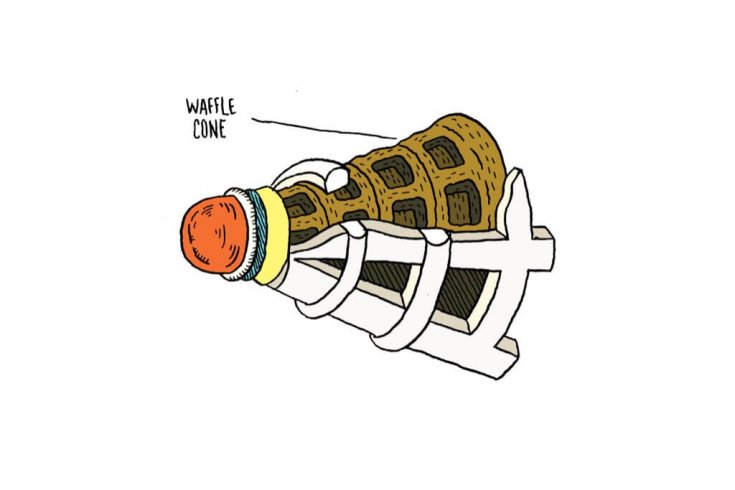
Terry Fox has been dead for twenty-eight years, but his legacy, the Terry Fox Run, endures. The brainchild of Four Seasons founder Isadore Sharp, it has raised millions of dollars for cancer research since its inception in 1981. And not just in Canada. The courage of the mop-haired twenty-one-year-old boy who set out to jog across the country on an artificial leg—he started his Marathon of Hope in St. John’s and was almost in Thunder Bay when, after 143 days, the recurrence of his cancer forced him to stop—has inspired people around the world. Today there are Terry Fox Runs in twenty-nine countries, including Croatia, the United Arab Emirates, and China. But the largest outside of Canada—and this will come as a surprise—is in Cuba, where it was introduced by someone at the Canadian embassy eleven years ago and now attracts more than 2 million men, women, and children, many on bicycles and roller skates, a few in wheelchairs.
Terry Fox—an unlikely Cuban hero, but then Canada and Cuba are bound in ways that go well beyond our attraction to its soothing beaches (Cuba is the fifth most popular overseas destination for Canadians). We have been trading partners since the eighteenth century, when ships sailed up and down the eastern coast of North America, their holds stuffed with rum and sugar on the voyage north, codfish and beer travelling south. Canada and Cuba established diplomatic relations in 1945, fourteen years before the revolution that brought Fidel Castro to power. In the fifty years since, we have continued to strengthen our diplomatic and commercial ties—disregarding the wishes of the United States, which imposed a trade embargo on Cuba in 1960. Today Canada is Cuba’s second-largest trading partner.
Cubans cherish the memory of Pierre Trudeau’s state visit in 1976, his youthful bride, Margaret, in tow. Trudeau believed Canada should pursue its own foreign policy, independent of the United States. (In 1969, he famously quipped that being situated next to America “is in some ways like sleeping with an elephant. No matter how friendly and even-tempered the beast, one is affected by every twitch and grunt.”) In Havana, standing before 25,000 cheering Cubans, he shouted “Viva Cuba! Viva Fidel Castro! Viva la amistad cubano-canadiense!” The United States was not impressed—and certainly in no mood to follow Trudeau’s lead. As time went by, the embargo, one of the most enduring in modern history, only intensified. In 1989, the Senate passed the Mack Amendment, which prohibited foreign subsidiaries of US companies from doing business in Cuba. Then, in 1996, Congress enacted the Helms-Burton Act, extending the embargo to any foreign company “trafficking” in property owned by US citizens before the revolution.
Ian Delaney knew there would be risks when he set up shop in Cuba in 1991. Formerly a Bay Street investment executive, he had recently assumed the top job at Sherritt, a struggling Canadian commodities company. Sherritt had a metals refinery in Alberta but no supply of nickel; Cuba had nickel reserves but lacked the capital to exploit them. Delaney and Castro made a deal, which eventually included not only nickel but cobalt, oil, and gas. Sherritt became the Communist country’s largest foreign investor, and Delaney its most influential foreign businessman—although, as Rachel Pulfer points out in this issue (“Castro’s Favourite Capitalist”), he has paid a price. In 1995, he and his family were blacklisted by the US State Department; for Ian Delaney, the United States was now off limits.
Pulfer, a freelance writer, developed an interest in Delaney while reporting a story on Sherritt for Canadian Business. “I soon realized that he was more interesting than the company itself—a man with a reputation for taking what some people regard as outrageous risks, who also expresses genuine concern about the difficulties facing the economies of the developing world. While he’s upfront about his motives in making the deal with Castro—profit, on a grand scale—he talks at length about Sherritt’s social and economic impact as a supplier of jobs, electricity, and fuel to the Cuban people. He believes the Third World has been sold intellectually bankrupt economic strategies by First World governments and institutions, and he worries that as a consequence it will sustain widespread poverty and deprivation in the current economic crisis.”
Times change. Barack Obama has a more moderate view of Cuba than his predecessors. In April, his administration lifted restrictions on Cuban Americans who want to travel and send money to their homeland. For his part, Fidel Castro, in failing health, has turned over the running of the country to his brother Raúl. Cuba watchers believe that over the long term—which is to say, after Fidel’s death—Raúl will endeavour to emulate the early phases of the “China model,” slowly opening up the economy while maintaining strict political control. In time, then, the US embargo will fall. Cuba, the largest and—thanks to Castro—best educated of the Caribbean countries, will thrive. And Ian Delaney, and Canada, will reap the benefits of a relationship that proves that the enemy of your friend need not be your enemy as well.

